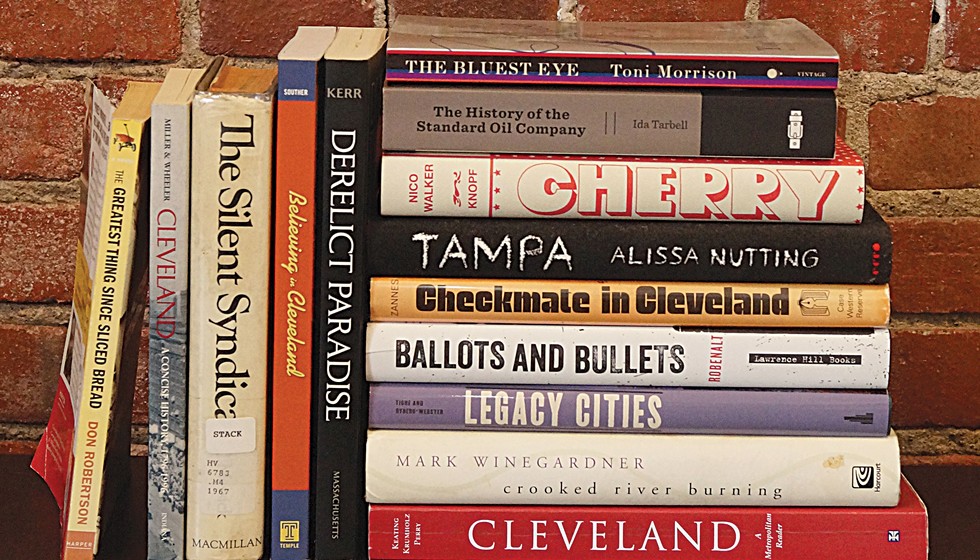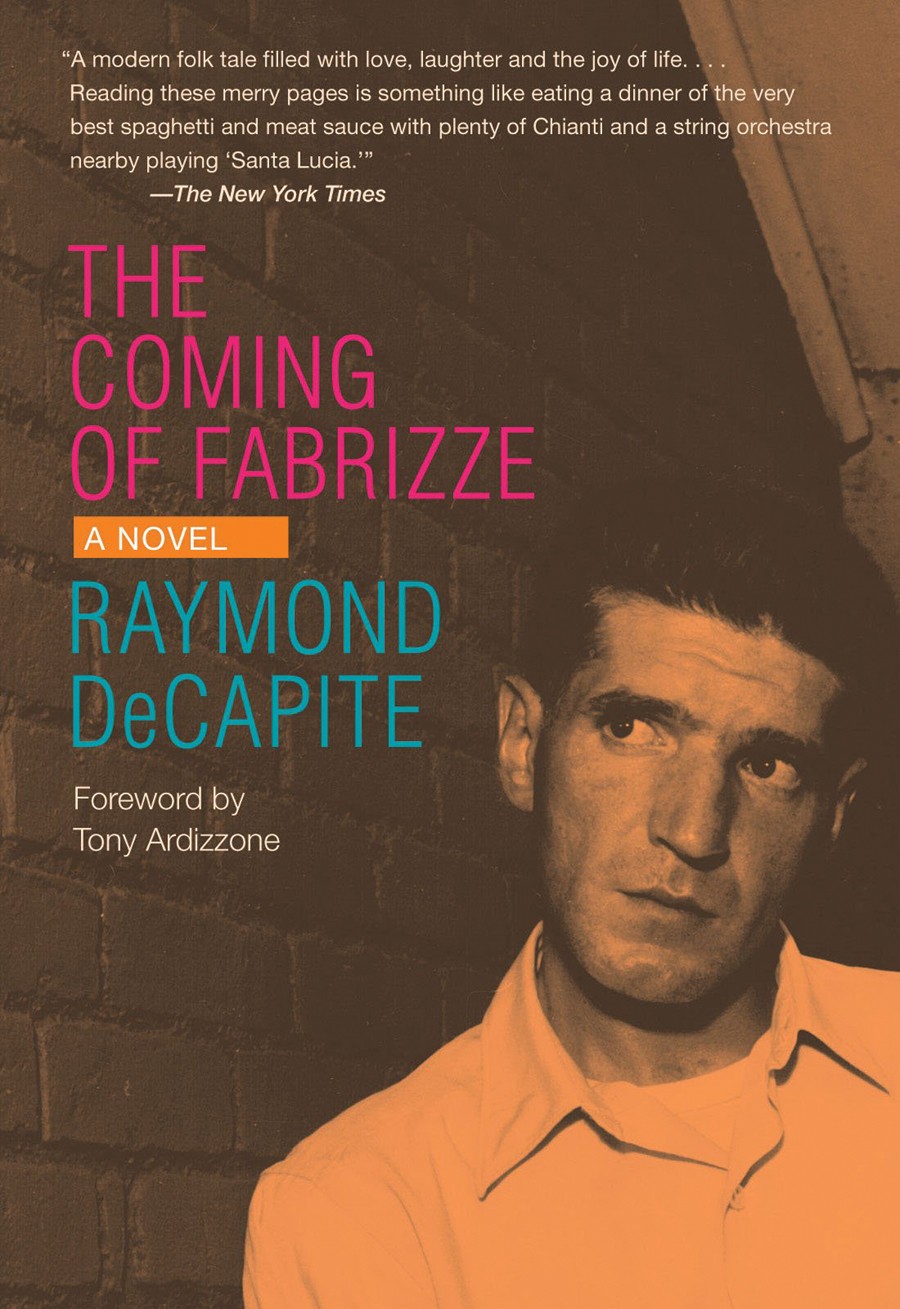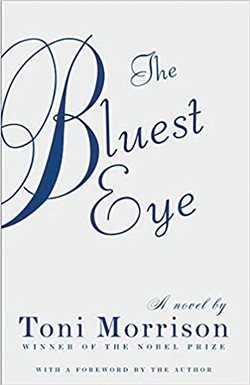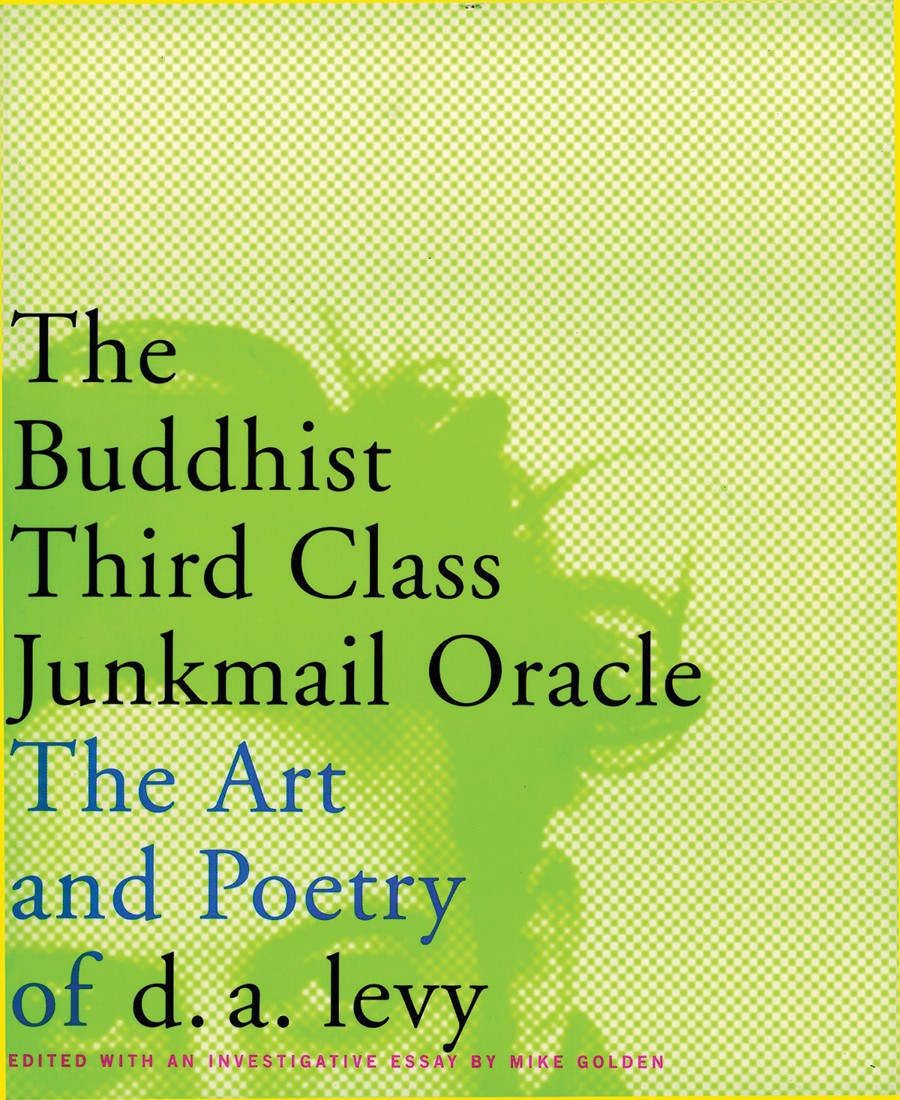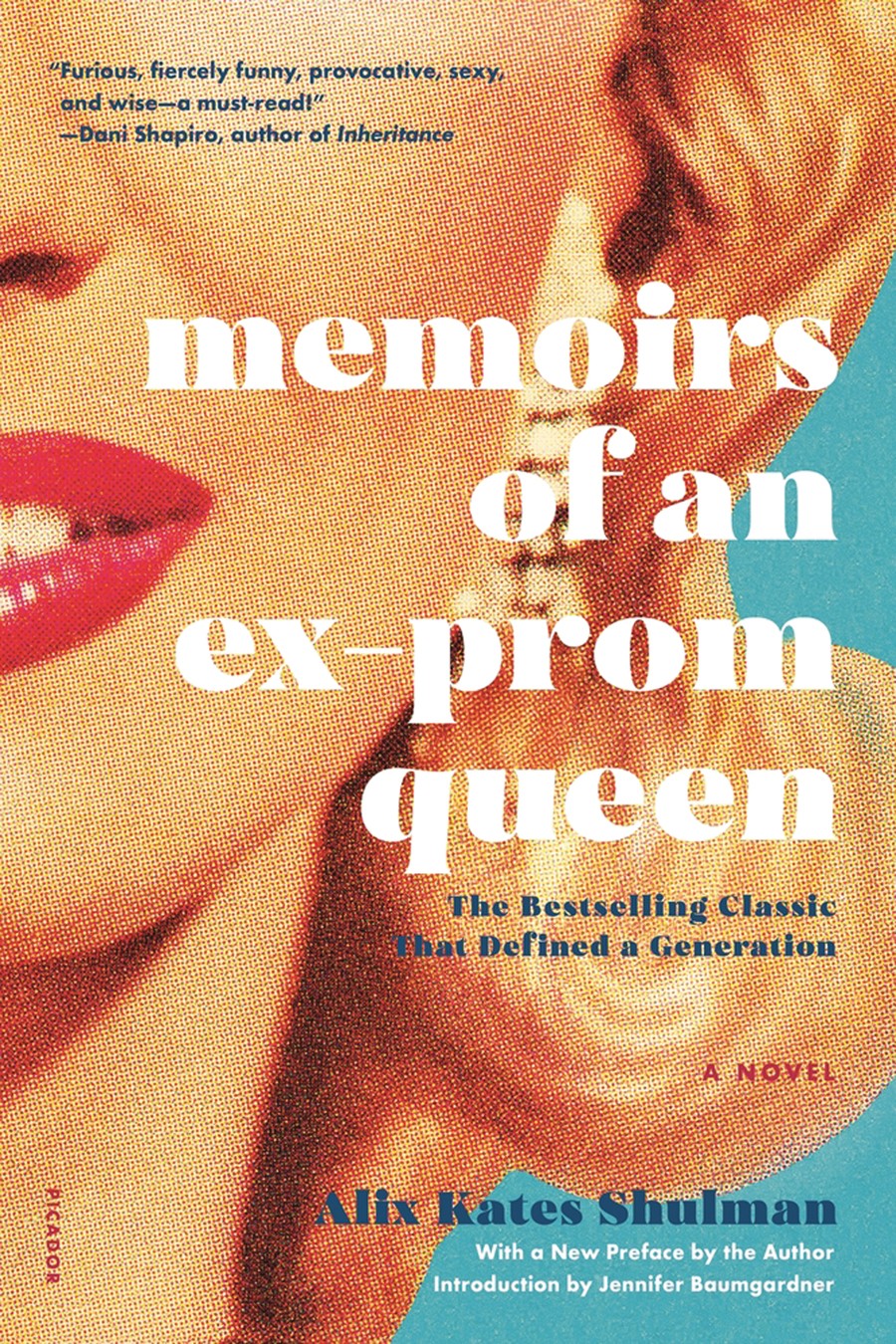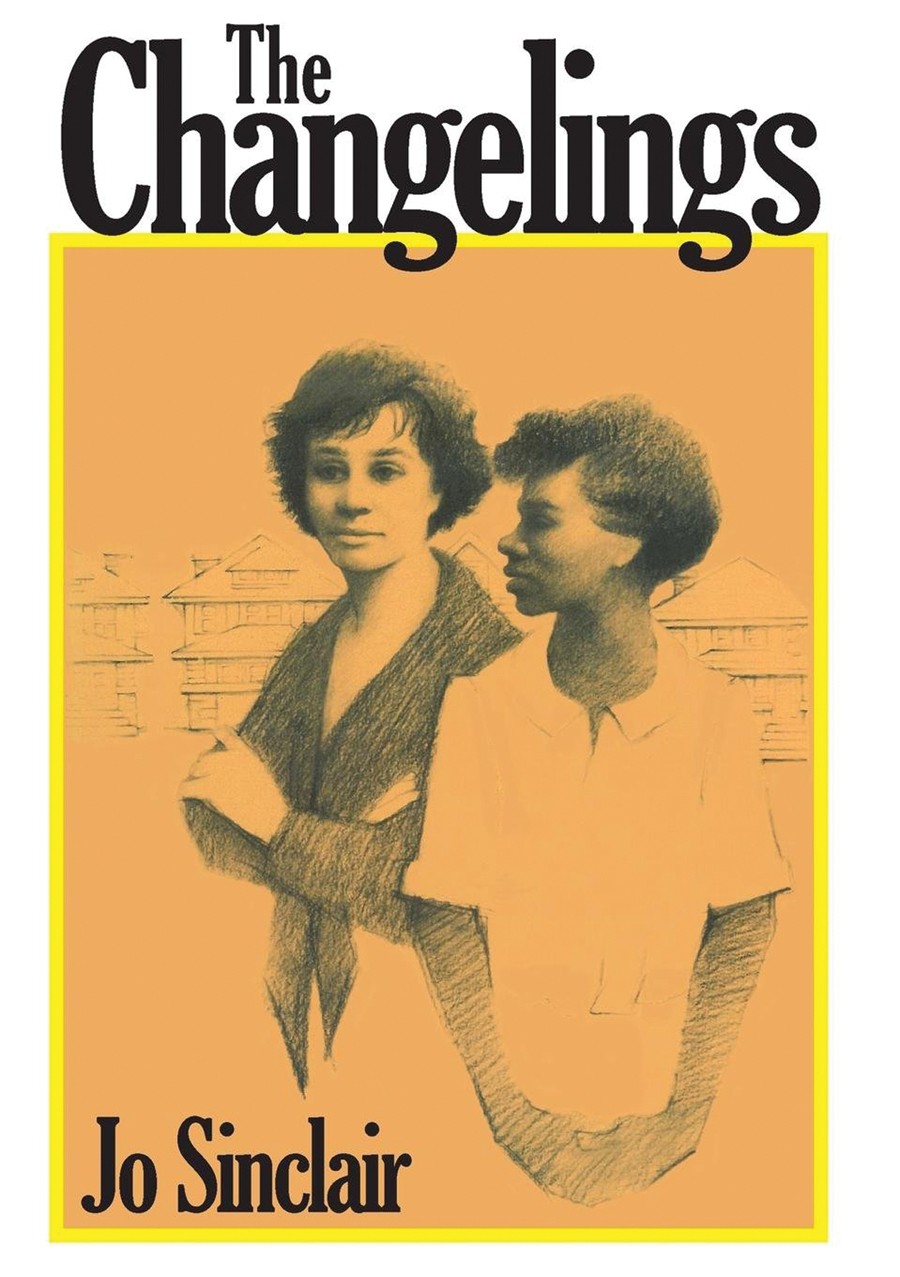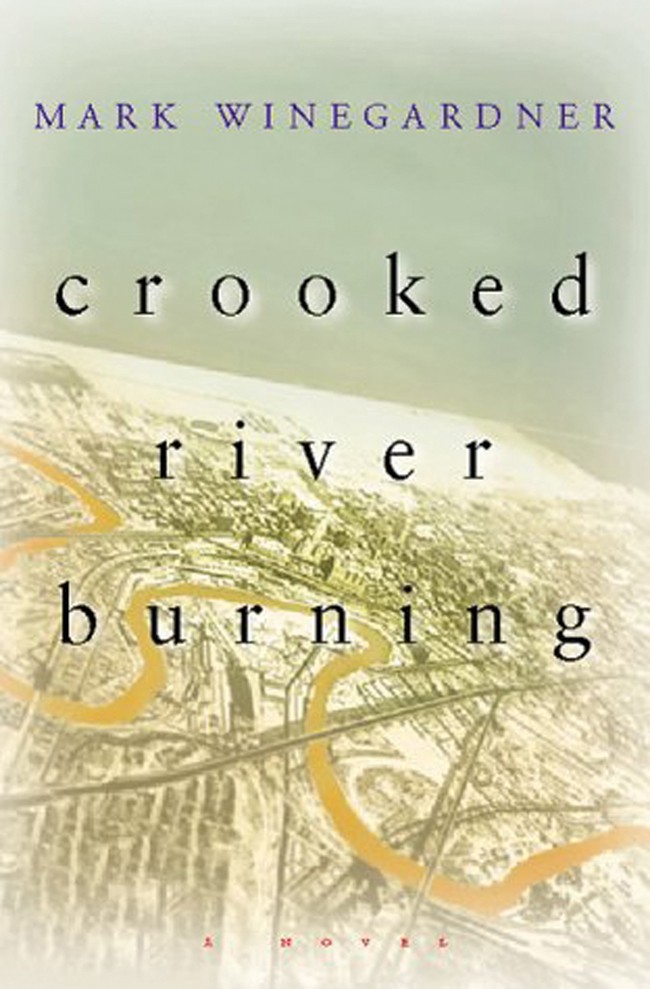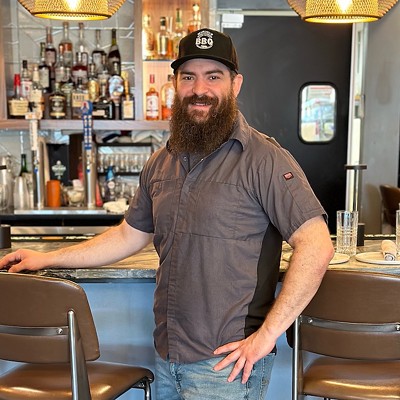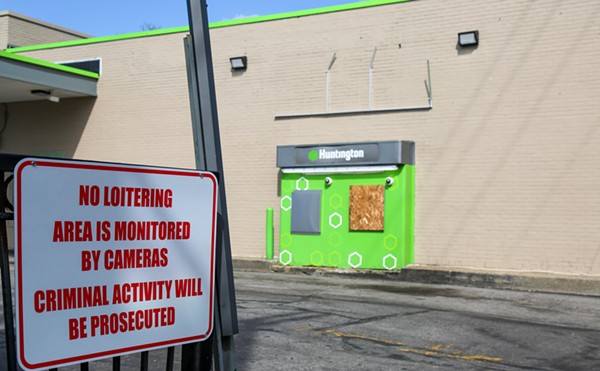With its shortened days and whipping winds, winter in Northeast Ohio is the 10 months each year when we allow ourselves to throw on sweatpants, chug hot cocoa or bourbon and spend long evenings indoors mindlessly scrolling through Netflix's inane personalized viewing options.
But for those of us annoyed by (or morally suspicious of) the way screens have come to monopolize our attention — that is to say, monopolize our lives — books offer a warm refuge. But they can also be intimidating. If Netflix's array of niche categories inspires helplessness or dread, imagine what a library can do! Where does one begin? What does one even like?
Personal preferences naturally vary, but a list of books about Cleveland or by local authors, including fiction, nonfiction and poetry, is certainly a fun category for the literary dabbler, hardcore reader or local history buff.
As it happens, we read a lot of nitty-gritty stuff about Cleveland as part of our jobs: daily newspaper stories; annual reports; the latest academic research on regional trends. And we're also not shy about saying we're big fans of fiction. But there hasn't been, we realized, a long list of good local books that included many of the titles that have been most instrumental in shaping our understanding of the city. That seemed like an oversight, one we sought to immediately correct.
Putting together this list, with input from some of our most trusted friends and readers, was a joy. But what follows should not be interpreted as an exhaustive or definitive collection. Like all hungry readers, we welcome suggestions for additional titles to include in later coverage and our personal libraries. And there were some we couldn't include simply because of space constraints. Instead, think of these as books that have, for one reason or another, been important to us. In many cases they're books that we just really enjoyed.
In the poetry, fiction and nonfiction below, we hope that you find books that you've already read. We also hope you come across ones you haven't, and maybe even ones you haven't even heard of. We enthusiastically recommend them all, and wish for you the same nourishing sense of discovery, even epiphany, that accompanied our experiences with them.
Virtually all of these titles are available for borrowing at the Cleveland Public Library. Some of them are even on display at the downtown branch, in conjunction with this issue's publication. While many of them may be difficult or expensive to buy, we recommend purchasing local books at local bookstores when you can. (It goes without saying that this list should double as a gift guide for the Cleveland reader in your life.) Many of our favorite shops, places like Mac's Backs, Loganberry Books and Visible Voice, have permanent "Cleveland" sections in their stores and are keeping Cleveland's rich literary history alive.
Dive in!
A (*) signifies a nonfiction title. Capsules written by Sam Allard (SA), Vince Grzegorek (VG), Daniel Gray-Kontar, Hannah Lebovitz (HL), Karen Long, John McQuaid (JM), Lou Muenz, Eric Sandy (ES), Brett Zelman (BZ).
* * *
World'd Too Much: The Selected Poetry of Russell Atkins (2019)
Russell Atkins
It is little known that Russell Atkins, one of the United States' most important living poets, is a lifelong Clevelander. Atkins, now in his mid-90s, was a contemporary of Langston Hughes, and in fact, it was Hughes who introduced Atkins' work to publishers across the globe in the late 1940s. Atkins was among the first concrete poets, creating poetry that also appeared as artworks on the page. But Atkins' poetry was also uniquely Cleveland, capturing everyday people and familiar settings with a brand of humor and honesty that memorialized the city through verse. At long last, thanks to the CSU Poetry Center and editors Kevin Prufer and Rober E. McDonough, the legacy of Atkins' poetry lives through the book World'd Too Much, a necessary compendium that celebrates the contributions of a major figure in American letters who has for too long been relegated to the margins of American literary history. (Daniel Gray-Kontar)
* * *
Await Your Reply (2009)
Dan Chaon
The bearded, bespectacled Cleveland Heights-dwelling Dan Chaon (pronounced Shawn) has produced some of the tightest and most chilling prose of the past 20 years. His second novel, Await Your Reply, may be his best. Within it, he braids the frayed strands of three interlocking narratives with characters and settings plucked from his own life: Nebraska, Northwestern University, Cleveland Heights, Ohio. One of the three storylines follows estranged identical twins from the Heights who attended Roxboro Middle School and Hawken. There's no room to try to explain the plot, but it's enough to know that Chaon is a masterful prose stylist and a low-key king of suspense. (SA)
* * *
*Democratizing Cleveland (2007, 2018)
Randy Cunningham
Many of the most popular and celebrated nonfiction accounts of Cleveland — and indeed, much of the scholarly work on this list — zoom in on the 1960s. That tumultuous decade was one of profound racial tension and political upheaval. But few Cleveland writers have examined in depth (beyond an armchair Dennis Kucinich screed or two) the decade from 1975 to 1985. And only Randy Cunningham, in his book which was re-released last year by Belt Publishing, has done so through the lens of community organizing. Via personal interviews and firsthand experience, Cunningham writes how power was fomented at the grassroots level and how neighborhood organizing paved the way for the community development corporation boom. CDCs have cropped up in virtually every Cleveland neighborhood and these days tend to focus at least as much on private real estate development as they do on building community. Cunningham knows why. (SA)
* * *
The Coming of Fabrizze (1960)
Raymond DeCapite
An under-the-radar Cleveland novelist, Raymond DeCapite should rightly be considered the bard of the South Side. The longtime Tremont resident absorbed the ethnic melting pot of the neighborhood from the 1950s, 1960s and 1970s and filled his novels with characters Cleveland through-and-through. His debut effort, The Coming of Fabrizze, reaches back to the '20s for what The New York Times called a "modern folk tale filled with love, laughter and the joy of life," among many sparkling reviews at the time. The story follows a hardworking laborer who returns to his native village in Italy to the celebration of the townsfolk and his family but is soon followed by his nephew, Cenino Fabrizze, who accompanies his uncle Augustine back to Cleveland just in time for the stock market crash. The novel's deft portrayal of Italian-American immigrants' hope and hard work in times both booming and less so was glowingly celebrated. His novels had been largely out of print and hard to find prior to his death in 2009, even though his son, Mike DeCapite, told Cleveland Magazine that none other than Don DeLillo, who loved Fabrizze, had sent a copy to the New York Review of Books in the hopes of reviving modern interest. Thankfully, the Kent State University Press reprinted this, and A Lost King, in 2010 so a new audience could discover what the generation before had so thoroughly enjoyed. (VG)
* * *
Thomas & Beulah (1986)
Rita Dove
The year before the Pulitzer Prize caught up to the genius of Toni Morrison, it anointed another Ohio writer, awarding $1,000 to Rita Dove for Thomas and Beulah. Quietly mesmerizing, the book is centered on a version of Dove's maternal grandparents' lives in Akron. The first section, Mandolin, begins with her grandfather's life on a Mississippi riverboat. Its 23 poems encircle Thomas' life, often its quotidian moments, with economy and grace and glints of humor. The second half, called Canary in Bloom, follows Beulah through daydreams and disappointments over 21 poems. Dove likened them to "pearls on a necklace," poems able to stand alone, but more meaningful in sequence. The last two pages are a chronology, an exoskeleton of dates, from Thomas' birth in 1900 to Beulah's death in 1969. In those 69 years, Dove contains multitudes. She writes a specific, Midwestern African-American arc, conjuring a space that had not yet existed in American letters. Looking at a smokestack in Obedience, Beulah's "body's no longer tender, but her mind is free." (Karen Long)
* * *
The Headmaster's Papers (1983)
Richard Hawley
Richard Hawley is both a commercial best-selling author and someone who happens to be among some of your favorite authors' favorite authors — count John Irving and Alice Munroe as fans. "Imagine a good man whose props have fallen away," Hawley wrote in a journal before starting work on this book, which was first published by a small press in Vermont before receiving critical acclaim and a paperback reprinting from Bantam years later. That man is John Greeves, the headmaster at an all-boys private school in Cleveland. (Hawley would, months after the publication of this book, himself become the headmaster of University School.) This episolatory novel — a form in which the entire story is delivered by letters, notes, addresses, etc. — traces, in absolutely heartbreaking fashion, the changes in his professional and personal lives, which are driving the headmaster into uncharted and uncomfortable territory. His wife is dying, his son is an addict, his tethers to all that defined him are disappearing, and in letter after letter, speech after speech, life is propelling him toward the end as he attempts to grasp one last bit of autonomy from the wreckage. (VG)
* * *
The Collected Poems of Langston Hughes (1995)
Langston Hughes, ed. by Arnold Rampersad
This ultimate collection, arranged more or less chronologically, includes nearly 900 poems from one of the greatest and most popular poets of all-time. Dubbed the Poet Laureate of African America, Hughes grew up in Cleveland and maintained a close relationship with Karamu House throughout his life. The collection includes both his most well-known work — including his 1951 book-length poem Montage of a Dream Deferred — and previously unpublished and suppressed material. It's edited by Hughes' own biographer Arnold Rampersad and is an indispensable edition for both the Hughes dabbler, the Hughes aficionado, and the Cleveland lit junkie. (SA)
* * *
*Cleveland: A Metropolitan Reader (1995)
Ed. by Dennis Keating, Norman Krumholz and David C. Perry
Composed chiefly of contributions from scholars at CSU's Maxine Goodman Levin College of Urban Affairs, this monumental volume is the single most important anthology for understanding Cleveland's history and political economy. It'd be an introductory textbook in virtually any college course about the city. With selections from each of the three editors, all giants in their respective fields; several historians who are included elsewhere on this list; and even a famous special "Cleveland Mayors" edition of Point of View by legendary local muckraker Roldo Bartimole, the seven-part book is a multifaceted compendium of the city's social and political development. Classics upon classics! (SA)
* * *
*Derelict Paradise (2011)
Daniel Kerr
Of all the books on this list, Daniel Kerr's Derelict Paradise may be the single most important. Covering a huge historical period, from the late 19th century to the early 21st, Kerr totally reframes homelessness and poverty in Cleveland by examining who has benefitted from it. There are so many epiphanic moments throughout that will utterly reshape (or reinforce) your conception of the city and its leaders. One of the most destabilizing revelations is that public dissent has been effectively crushed by rendering invisible the structural causes of inequality. Kerr's clear, rigorously sourced prose is enhanced by a commitment to social justice. It's both an infuriating and invigorating read. Kerr now teaches history at American University, but his Cleveland masterwork will remain a vital source of reality for those who don't wish to live in the Matrix. (SA)
* * *
*A Ghetto Takes Shape: Black Cleveland, 1870-1930 (1976)
Kenneth L. Kusmer
From Carl Stokes to Tamir Rice, race has defined modern Cleveland's history. It's a story of botched promises, institutional bigotry, and the sins of self-interest. But to fully understand the city today, you have to dig into Kusmer's meticulous history of how African-Americans went from a vibrant part of Cleveland's city life in the 1800s to a segregated, forgotten population. Citing primary accounts and newspaper coverage, the historian documents how Cleveland was once a place of equality and abolitionist spirt in the years before the Civil War. By the industrial revolution, however, Cleveland's new waves of European immigrants set in motion a scramble of political power, sidelining black Clevelanders in the process. The book's heartbreaking conclusion argues this fall from equality to segregation is what ultimately doomed the city. (VG)
* * *
Tampa (2012)
Alissa Nutting
What on earth is a book called Tampa, which does indeed take place in the eponymous city — and for the record is about a middle-school teacher's steamy affair with a 14-year-old student — doing on a list of essential Cleveland reads? Well, consumers of local fiction may be surprised to learn that author Alissa Nutting, the third vertex in a powerhouse triangle of contemporary Florida fiction writers which also includes Karen Russell and Lauren Groff, taught for a time at John Carroll University. And while her second novel, Made for Love, may be the more prescient literary achievement, Tampa owns the distinction of having been written primarily at the Lakewood Public Library, near where Nutting lived at the time. Cleveland should be overjoyed to claim it. (SA)
* * *
*The Silent Syndicate (1967)
Hank Messick
Through the meticulously documented story of the Cleveland Syndicate, this riveting account by Hank Messick manages to tell the full story of organized crime in mid-20th-Century America. This was before the mob's vast influence was widely known, and certainly before "the Mafia" was culturally popularized five years later in The Godfather. Messick's extensive research was funded by the Ford Foundation, and even though the book was ultimately used by law enforcement agencies, it doesn't read like a sober historical document. It has all the drama of the very best narrative nonfiction. And for Cleveland history buffs, it has the juicy details on the local mob's litany of rackets: from rum-running on Lake Erie in Prohibition days to the casinos. (SA)
* * *
*Surrogate Suburbs (2017)
Todd Michney
Two decades into the 21st century, there are a significant number of black families living outside of the municipal boundaries of the city of Cleveland. A century ago, however, many had to fight just to reach the outer neighborhoods within the city. Todd Michney's 2017 book highlights the struggles that upwardly-mobile Black families faced in their efforts to move away from the urban core. Areas such as Mount Pleasant, Hough and Glenville offered black families the chance to live a suburban-like lifestyle, even when they could not purchase a home or safely move to the cities outside of Cleveland. However, the existing white residents made even these intra-city migrations not only difficult but, in some cases, dangerous. Michney's book sheds important light on the racial tensions that existed within the city of Cleveland at a time when black political and economic power were on the rise. But the book offers more than a tension-filled story line. It highlights the ways that black communities fought back against discrimination through sustained community and coalition building. The focus might be historical but the takeaways are still incredibly relevant. (HL)
* * *
*Cleveland: A Concise History (1990, 1997)
Carol Poh Miller and Robert A. Wheeler
This slim historical volume, weighing in at less than 200 pages before appendices, is one of the most engaging and accessible books about Cleveland. It's chock full of trivia — gas lighting was introduced to downtown streets in 1850! — and swiftly charts the city's historical course with special emphasis on Cleveland's rich cultural and industrial heritage. The second edition, published in 1997, includes a chapter, "The New American City," focused on the downtown development boom of the early Michael White years. For those wanting a wide-ranging, surface-level precis on the city, and for those who want their historical facts ironed out, there's no better text to recommend. (SA)
* * *
The Bluest Eye (1970)
Toni Morrison
"Since why is difficult to handle," Toni Morrison wrote in the prologue to her debut novel The Bluest Eye, "one must take refuge in how." Hailing from Lorain, Ohio, Morrison chronicled the anguish of the black American experience in 11 revelatory novels. And while much of her work is rooted in Northeast Ohio, The Bluest Eye feels especially divined from the community in which she grew up. Morrison has written that in her first book, she wanted to explore the tragic consequences of "accepting rejection as legitimate, as self-evident." She follows a young black girl who wants, more than anything, blue eyes. Her prose is wondrous stuff. "Guileless and without vanity, we were still in love with ourselves then," Morrison wrote. "We felt comfortable in our skins, enjoyed the news that our senses released to us, admired our dirt, cultivated our scars, and could not comprehend this unworthiness. Jealousy we understood and thought natural — a desire to have what somebody else had; but envy was a strange, new feeling for us. And all the time we knew that Maureen Peal was not the Enemy and not worthy of such intense hatred. The Thing to fear was the Thing that made her beautiful, and not us." (SA)
* * *
Little Fires Everywhere (2017)
Celeste Ng
Shaker Heights native Celeste Ng stormed onto the literary scene in 2014 with her gripping novel Everything I Never Told You. And there was no sophomore slump. She followed it up in 2017 with Little Fires Everywhere, a critically acclaimed bestseller that takes place in the near-eastside suburb that Ng grew up in. Shaker Heights is a well-manicured suburb with strict regulations and standards and giant mansions and a great history. But it's also a suburb where there is a wide divide between the haves and have-nots, where race and class collide, and it's this territory and dichotomy that Ng mines. The story focuses on an artist and mother, Mia, and her daughter Pearl, who rent a house from the wealthy Richardson family. Some friends of the Richardsons are attempting to adopt a Chinese-American baby, and the fight over that adoption takes over the town, which ultimately leads to a compelling battle with lines being drawn that end up unearthing family dynamics and secrets of both sides. (BZ)
* * *
The Buddhist Third Class Junkmail Oracle (1999)
d.a. levy
In the weeks and months leading up to d.a. levy's suicide in 1968, the elegist of an earlier era of Cleveland would distribute copies of The Buddhist Third Class Junkmail Oracle, his underground newspaper, among artistic crowds and wayward wanderers. In his poems and criticism, levy called out the dysfunctional, often usurious relationship that the city has with its artists. Not much has changed since the late 1960s — certainly not in the power dynamics of local political structures. If anything, the artistic enclaves of Cleveland have moved on to bigger topics, addressing unease with broader capitalist systems and national trends (police violence, ICE raids, workers' rights). And yet levy's words remain a powerful reminder that even the voiceless can be heard in the midst of a complicated, self-righteous city. "Cleveland, I gave you / the poems that no one ever / wrote about you / and you gave me / NOTHING" (ES)
* * *
American Splendor (2003)
Harvey Pekar, with introduction by R. Crumb and art by Kevin Brown, Gregory Budgett, Sean Carroll, Sue Cavey, R. Crumb, Gary Dumm, Val Mayerik, and Gerry Shamray
It's Harvey-freaking-Pekar: Of course you should read it. (VG)
* * *
*Loose Balls: The Short, Wild Life of the American Basketball Association (2007)
Terry Pluto
Before oral histories were even a thing, Terry Pluto cataloged the unbelievably funny, influential and short-lived American Basketball Association (1967-1976), an upstart league that challenged the NBA's dominance with flashy characters and flashy play, eventually forcing a merger. With interviews from dozens of former players — and players there were, with the ABA giving basketball fans Moses Malone and Dr. J, just to name two — Loose Balls delivers the history the league, and its many bizarre and important moments, deserved. From players chartering their own flights and showing up minutes before the game in mink coats to coaches showing up at halftime, from the introduction of the 3-point line to an emphasis on dunks and high-flying action, it documented a league that was barely covered at the time but whose fingerprints are all over the modern game, and it remains one of the best sports books ever written. (VG)
* * *
*Cleveland: Confused City on a Seesaw (1976)
Philip W. Porter
If you're interested in Cleveland's history, but sick of seeing all these scholarly accounts of the city, perhaps you'll be interested in Confused City on a Seesaw, Philip Porter's firsthand account of his experiences in the city during his 50-year career as a newspaperman. Ascending to the executive editor throne at the Plain Dealer, Porter had unique insight on both Cleveland's leadership class and the news media to which he belonged. In one chapter, he discusses at length one of the local media's most influential 20th century figures, Louis Seltzer, "Mr. Cleveland," editor of the Cleveland Press for 38 years. Overall, it's a brisk, readable eyewitness account. (SA)
* * *
The Dead Key (2014)
D.M. Pulley
At first glance one might expect D.M. Pulley's The Dead Key to be a vanity project destined for a future in the local highlights section of a Northeast Ohio bookstore or Cuyahoga County Library branch. In fact, a rediscovered safe deposit box key becomes the catalyst for a tense and well-paced novel that brings to life two different eras of Cleveland — the nadir of 1978 and the hopeful resurgence of the late 1990s. (Its bona fides also include winning the 2014 Amazon Breakthrough Novel Award.) The reader follows the exploits of two young women, two decades apart, as they investigate the hidden activities in a downtown bank, which of course are not entirely what they seem. Like most thrillers set in a specific place and time, overly pedantic readers will have their quibbles, but don't let that get in the way of an entertaining tale with plenty of satisfying inside references to Cleveland. (JM)
* * *
*Ballots and Bullets (2018)
James Robenalt
Cleveland attorney James Robenalt's account of the 1968 Glenville riots examines the ways that urban guerilla warfare was advanced as a method for combating racism in America's cities. The book traces the local and national events that lead to the infamous Cleveland shootout that left 10 dead and more than 15 wounded. But it also describes the political aftermath, even to this day, noting that police brutality against black communities is still rampant and that the root causes of racism and poverty are often ignored in favor of politically expedient appeals for "law and order." Another solid read from the Stokes era. (SA)
* * *
The Greatest Thing Since Sliced Bread (1965, 2008)
Don Robertson
A road story set against one of the most devastating moments in Cleveland's history, Don Robertson's most beloved and well-regarded novel follows 9-year-old Morris Bird III as he sets out from his home on Edmunds Avenue off East 90th Street with his sister and wagon in tow to visit a friend across town. It is October 20, 1944, when gas leaked from an East Ohio Gas storage tank, seeped into the sewer system, and caught fire, exploding a good chunk of the east side. One hundred and thirty people died, 70 homes were destroyed, 600 were left homeless. Robertson's tale of adventure, friendship, loyalty and childlike awe brought comparisons to Tom Sawyer when it was first published in 1965. (It was later reissued in 2008.) Robertson, a native Clevelander and former Plain Dealer reporter, was regarded as a mid-selling author, and though some of his novels found homes in big publishing houses, he also struggled to find an audience at times. Stephen King, who has said Robertson is one of his favorite novelists of all time, published one of Robertson's last books on his imprint in 1987. (VG)
* * *
*Cleveland: The Making of a City (1950)
William Ganson Rose
In terms of granular, nitty-gritty histories, you can't do better than this book, published in 1950 by World Publishing. An invaluable historical diary of Cleveland and the Western Reserve, The Making of a City documents the region from the early days of the settlers to the industrial churn of post-WWII America. Rose, a lifelong Clevelander and former Plain Dealer editor, set about with a clear premise — how does a city form and grow? — and elucidated it with the people and events that made it happen. From the major movements and characters to the trivial — William Tax was the first person arrested in Cleveland, on May 21, 1836, after unlawfully firing his gun; after the Kelley brothers formed a winery on their Lake Erie island, Mark Twain remarked, "You can't fool me with Kelley Island wine; I can tell it from vinegar every time — by the label on the bottle" — Rose collects everything you'd ever want to know about early Cleveland. (Lou Muenz; follow along with his reading of the book on Twitter @MOCCleveland.)
* * *
The Sparrow (1996)
Mary Doria Russell
Mary Doria Russell, of Lyndhurst, is one of Northeast Ohio's most important novelists. The Sparrow is her glittering debut from '96, and it remains a classic of speculative fiction. Weaving in the religious and existential questions that rack the minds and souls of so many seekers, the book follows Fr. Emilio Sandoz, whom St. Ignatius and John Carroll alums will be pleased to note is a Jesuit priest. Sandoz has returned from an outer space expedition physically and spiritually mutilated by a mysterious confrontation with an alien species. Russell wrote a sequel, Children of God (1999), and has more recently written two historical novels on gunslinger Doc Holliday. But for those of us who encountered it in high school, The Sparrow will always hold a special place in our hearts. (SA)
* * *
The End (2008)
Salvatore Scibona
Set on a single day in 1953 in Elephant Park, Cleveland, an Italian immigrant community modeled after Murray Hill, Scibona's rhapsodic 2008 novel was all the rage in MFA circles in the late aughts. The Plain Dealer uttered Scibona's name in the same breath as such modernist giants as T.S. Eliot, William Faulkner, Virginia Woolf and Gertrude Stein! Esquire called it a mashup of Joan Didion and Alfred Hitchcock. Scibona faded from view until the publication of his second novel, The Volunteer, earlier this year, but The End remains a forceful, and at times ravishing, novel of immigration and family bonds. It should be more widely embraced by Cleveland readers. (SA)
* * *
Memoirs of an Ex Prom Queen (1972, 2019)
Alix Kates Shulman
Forty-five years after it was first published and became a best-seller, Alix Kates Shulman's Memoirs of an Ex Prom Queen was reissued this year by Picador, bringing the groundbreaking feminist novel to a whole new audience. Though The New York Times condescendingly dinged it upon its debut — "The publishers announce this angry little book as the first feminist novel" — it found a wide and eager audience thanks to its darkly comedic and fiercely honest portrayal of Sasha, a girl who, like the author, grows up in Cleveland in the 1940s and '50s, a time when things like abortions, date rape, gender roles, sexuality and vanity are both explicitly buried below the surface of everyday life and yet define it all. From dating to marriage to motherhood and divorce and beyond, from hope to crushing resignation and what comes after, it was a consciousness-raising flashbulb delivered to a mass audience in digestible fiction form that, some five decades later, remains a vital read. (VG)
* * *
The Changelings (1955, 1985)
Jo Sinclair
"The real ghetto, [Jo Sinclair] believed, was the 'ghetto of the spirit' into which large numbers of Americans were herded as children, when their inability to rationally explain such rejection left them with a bewildering sense of shame (and ever-present fear) that would inhibit their full flowering," the Cleveland Arts Prize notes of the author, its recipient in 1961 for the prize for literature. That, as critics and academics have eloquently addressed at further lengths since then, is at the heart of Sinclair's four novels, and for good reason. Jo Sinclair was the pseudonym used by Ruth Seid from the time of her first submitted and published piece for Esquire in 1938 — written while she was working at the WPA during the Great Depression — when entry into the world was easier for someone who could be male, and not Jewish, as opposed to the Cleveland middle-class Jewish lesbian that she was. Her first novel, Wasteland (1945), might be her best known, but The Changelings, first published in 1955 and reissued in 1985, is her most complete. Set in an Italian-American Cleveland neighborhood that's become more Jewish over time and has lately witnessed an influx of African-Americans, the book centers on two young female teens who battle back fiercely against the racism, anti-Semitism and "mob thinking" of their elders. The New York Times championed it for the "power with which the author reveals the impact of [racial] struggle on the new generation, whose survival lies in their power to love." Fifty years later, what Sinclair was talking about — of young generations challenging the ignorance inflicted upon them by the older generations around them, of acceptance and the erosion of racial, social and LGBT discrimination and hate — feels as relevant as when it was first published. (VG)
* * *
*Believing in Cleveland (2017)
Mark Souther
Nowhere are Cleveland's overzealous boosters more thoroughly taken to task than in the pages of Mark Souther's Believing in Cleveland, which became an instant classic when it was published in 2017, at least for Cleveland history nerds and the wisecracking dissidents of Twitter. Souther's premise is that decline and renaissance aren't necessarily sequential phenomena and that in Cleveland, the two often occur side by side. One of the most important aspects of Souther's first-of-its-kind research is that it exposed how local civic elites often promoted the city's comeback in public but expressed grave reservations among themselves. (SA)
* * *
*The Pitch That Killed: Carl Mays, Ray Chapman and the Pennant Race of 1920 (1989)
Mike Sowell
The name Ray Chapman provokes an automatic, Jeopardy-like response in any baseball fanatic: Who was the only Major League Baseball player to die as a result of injuries suffered on the field? The pitch from Carl Mays on August 16, 1920 that struck Chapman in the head and resulted in his death provides the catalyst for Mike Sowell's The Pitch that Killed: Carl Mays, Ray Chapman and the Pennant Race of 1920. Sowell's book explores the psychological impact on all those affected by the pitch. Chapman's wife and teammates were obviously devastated, some to the point of suffering nervous breakdowns. Their heartache becomes all the more poignant as the Indians rebounded to win the World Series that year, the organization's first. Sowell's treatment of Carl Mays is the true achievement, though. He takes the reader through Mays' life and motivations, from a wild spitballer who killed an opponent to a baseball lifer who would eventually work for the Indians in his post-playing career. (JM)
* * *
*Promises of Power (1973)
Carl B. Stokes
"For a brief time in Cleveland, I was the man in power." So writes Carl Stokes in his trenchant political autobiography published in the years after his single turbulent mayoral term. "I had what no black man in this country has had before: direct control of the government of a predominantly white population. That power came to me because I seized a situation that had made me seem like a savior to men who ordinarily look on blacks as an alien and vaguely dangerous force." (!!!) Reading histories of this pivotal era is crucial for understanding the city's current woes, but just as important is hearing the personal perspective of the man at the center of it. His anecdotes and barbs make for lively reading. (SA)
* * *
*Good Kids, Bad City: A Story of Race and Wrongful Conviction in America (2019)
Kyle Swenson
Expanding on an award-winning Scene investigation that helped exonerate three men wrongfully convicted of a 1975 murder in Cleveland, this book by former staff writer Kyle Swenson is a stunning narrative achievement. Delivering an incisive history of the city alongside a compelling and compassionate portrait of the lives of those three men, Good Kids, Bad City recounts the convictions and eventual exonerations some 40 years later in the framework of politics, race and criminal justice in Cleveland from the 1970s through today. (VG)
* * *
*The History of the Standard Oil Company (1904, 2018)
Ida Tarbell
Published serially in 19 installments in McClure's Magazine between 1902 and 1904, Ida Tarbell's flagship expose on one of America's most famous companies, Standard Oil (founded by John Rockefeller in Cleveland, Ohio), is an exemplar of muckraking journalism. Fortunately for local readers, the book was reissued last year by Belt Publishing as part of its "Revivals" series, with an introduction by Elizabeth Catte. Tarbell maintained an analytical rigor and distance in her work, even as she wrote with what Rockefeller's biographer Ron Chernow described as an "indignation that throbbed just below the surface." Her indignation, and her self-avowed "hatred of privilege" emerges from time to time, but her overall facts-first approach feels especially relevant now, as we recognize the value of journalism in its increasing absence and witness Standard Oil's monopolistic and predatory tendencies repurposed and optimized in the high-tech world. (SA)
* * *
*Legacy Cities: Continuity and Change amid Decline and Revival (2019)
Ed. by J. Rosie Tighe, Stephanie Ryberg-Webster
Rarely do we find a book centered on the struggles and opportunities of cities like Cleveland, written by not just one or two urban policy experts but an entire department of them. Tighe and Ryberg-Webster's edited volume grew out of a collaborative effort to highlight the uniqueness of Legacy Cities and resulted in a book that undoubtedly codifies much of the expertise within Cleveland State's Levin School of Urban Affairs. The book is divided into three sections: It describes components of Legacy Cities across the United States, then it outlines the history and current state of decline in the Cleveland region, and finally it offers clear strategies to mitigate decline and propel Cleveland toward resurgence. The book sets the groundwork for residents, public officials and business leaders to use policy levers to promote success and sustainability in the region. While other books have been written about the history and state of Cleveland, the value of this book is that it is an edited work. Individual chapters are both succinct and substantive on their own and even more powerful when combined into a single volume. Here's to hoping that local leaders take note of the book and recognize that much of its expertise is housed in a building only several blocks from their own. (HL)
* * *
The Space Between Us (2006)
Thrity Umrigar
In her second novel, longtime Case Western Reserve University professor, former journalist, and best-selling author Thrity Umrigar delivers a compelling and empathetic tale of class and family. Set in India, where Umrigar was born and lived until she was 21, The Space Between Us examines the relationship between Sera, a widowed Parsi housewife, and Bhima, the family's servant. In powerfully perceptive and subtle details that illuminate the character's inner lives — their individual traumas, their need for and pull toward each other, their shared experiences despite decisively different economic and social statuses — Umrigar spins a tender, heartbreaking story that unspools with a quietly arresting quality. (VG)
* * *
Cherry (2018)
Nico Walker
There have been few buzzier books in the past year than Cherry, the semi-autobiographical debut novel from Nico Walker written entirely behind bars while serving an 11-year sentence in federal prison for a string of bank robberies around Cleveland in late 2010 and early 2011. (The film rights were quickly snatched up for a princely sum by the Russo brothers shortly after publication.) Essentially a retelling of how he landed there, the novel spins the tale of a Cleveland boy who enlists and is shipped off to the Middle East, his struggle with undiagnosed PTSD upon his return, his descent into heroin addiction, and the bank robbery spree he subsequently engaged in to feed his habit. Whatever qualms one could point to — prose that seems, at times, an earnest, amateur impression of Henry Miller; an intensely misogynistic main character surrounded by shallowly developed female characters — Cherry is, from start to finish, a spare and unsparing portrait of the absolute horrors of war, both the unending ones fought overseas by America's young men and women and the opioid-strangled one at home. (VG)
* * *
The Broom of the System (1987)
David Foster Wallace
Wallace, who would later become famous for his 1,000-page opus Infinite Jest, and for his observant essays on American arts and culture — in particular, his commentary on the Midwest — penned his first zany novel as an undergrad at the University of Massachusetts and as a grad student at the University of Arizona. Like Infinite Jest, The Broom of the System features an enormous ensemble cast and explodes with the syntactical collision and formal diversity that are hallmarks of his work. For the purposes of this list, the story is set in Cleveland — a harebrained version, make no mistake — and the protagonist lives in the fictional suburb of East Corinth, "which determined the luxuriant and not unpopular shape of the Inner Belt section of I-271." One can almost watch in real time this post-modernist master discover the immensity of his talent. (SA)
* * *
Blackeyed (2014)
Mary Weems
Cuyahoga County Public Library's 2019-2020 Writer in Residence, Mary Weems brings a prolific career with her when she reads. Known for her plays and poems, Weems' work ranges across socioeconomic strata and recontextualizes the stories we've told ourselves about how the world is changing (and how we can change it). She draws the heartbreak and the emotional rebuilding process out of front-page headlines and national narratives — namely, the foreclosure crisis and its ongoing-ness, which has been both a local and national backdrop to much of her writing. We'll point you to her 2014 book of plays and monologues, Blackeyed, in which she examines the textures of the black American experience in its abundant contemporary shapes. Weems' work is highly ekphrastic, and she invites the reader to sit awhile with her words and her invocations of different forms, different sounds. (ES)
* * *
Crooked River Burning (2001)
Mark Winegardner
When it comes to quintessential Cleveland novels, no list would be complete without Mark Winegardner's 2001 epic, Crooked River Burning. Weaving a mix of fiction with mid-20th century Cleveland history, this epic, coming in at just under 600 pages, gets at the story of Cleveland from a macro sense. At the heart is a love story between an eastsider and a westsider bridging the city divide, but Winegardner also inserts legendary, real-life Clevelanders like Eliot Ness, Alan Freed and Carl Stokes into the mix, as well as notable east-side families that ran the city from behind the scenes in post-WWII Cleveland. Set against an era when Cleveland was changing by the day, the love story gets into the soul of the city, one which Winegardner clearly adored. (BZ)
* * *
*Checkmate in Cleveland (1972)
Estelle Zannes
The subtitle of Dr. Zannes 1972 political book is The Rhetoric of Confrontation During the Stokes Years. This forensic account of the political strategies in the major mayoral campaigns of the late 1960s — with deep focus on Carl Stokes vs. Seth Taft in 1967 — provides the sort of play-by-play coverage you'd expect from detailed, objective news coverage at the time. It is perhaps too in the weeds for casual readers, but the account offers valuable insight on racial politics, particularly as it evolved in the context of the riots in Hough and Glenville, and how the business community coalesced around Stokes to, in their view, purchase security. Dr. Zannes, who was a professor of communications, was interested foremost in the rhetorical strategies of political campaigns, and asserted that both Stokes and Dennis Kucinich brought a "show-biz quality" to local politics. (SA)
* * *
Cuyahoga (2020)
What we feel about ourselves is more important in many ways than what we know about ourselves. The stakes are even higher when you're talking about not just people but cities. Those tussles are at the heart of "Cuyahoga," the debut novel from Cleveland native Pete Beatty, a rollicking, inventive, satirical twist on fables and tall tales, an origin story of origin stories set in early 1800s Northeast Ohio on the eve of the marriage between Cleveland and Ohio City. Your guide on the adventure is Medium Son (Meed), a young resident of the ramshackle, frontier town of Ohio City whose older brother, Big Son, is the spirit of the times. In the vein of Johnny Appleseed, Big Son "had rastled rivers and lakes and rescued women in woe. Met the devil twice and whipped him three times. Ate panther fricassee for breakfast and tiger steaks at supper. Taught wolves how to wail and put a face on the moon with a rusty musket. Big Son has done more feats than you have brains to hold etc." For all of Big's good works, he'd received much adoration but "little in the way of government dollars."
With an engrossing style of prose and humor that critics have compared to John Barth, Thomas Pynchon and Charles Portis, Beatty spins the yarn from there: Cleveland wants a bridge over the Cuyahoga, but Ohio City fears it'll be squashed in the deal, forced from little sister status to something even lowlier. And Big, falling for the lovely Cloe, seeks to pivot from his work of feats to regular pay and status to win her heart.
Readers are treated to a tale of jealousy and nativism in 1837 populated by a rag-tag cast of slapstick Deadwood-ian characters navigating their personal and collective troubles. (VG)
* * *
Our Team. The Epic Story of Four Men and the World Series That Changed Baseball (2021)
Luke Epplin
This nonfiction work centering on the 1948 Cleveland Indians is, with good reason, now already in its fourth printing since being published in March and shortlisted for a whole bunch of awards. Telling the story of the Indians' last World Series championship but more so the story of the bumpy road to integration in baseball through four Cleveland characters — Larry Doby, who broke the color barrier in the American League just months after Jackie Robinson did so in the National League; Hall of Famer Bob Feller; Satchel Paige, the ageless Negro Leagues superstar who joined the Indians; and Bill Veeck, the team's owner — Epplin weaves a captivating, deeply reported story capturing the racial tensions and slow progress of the era. After the starring role sports have played in recent years in spotlighting and responding to racial, cultural and political issues, the book is a fascinating glimpse into how the team handled the collision of those same things with the game itself some 70 years ago. (VG)

